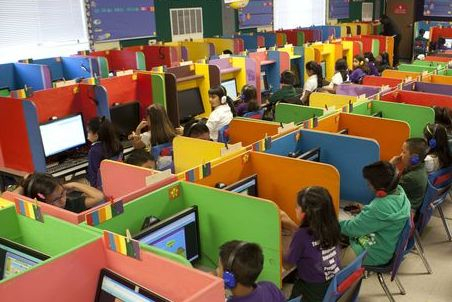Why Cubicles Are a Smart Choice for Early Education Classrooms
Classrooms are evolving, and cubicles are becoming an integral part of early education settings. These versatile tools not only enhance classroom organization but also help create focused and personalized learning environments for young learners. By providing each child with their own space to store materials and work independently, cubicles encourage responsibility and concentration. Moreover, they offer educators the flexibility to manage classroom flow while catering to diverse learning needs. In today’s world, cubicles are more than just furniture—they’re essential teaching tools.
Enhancing Focus and Reducing Distractions
In early education, creating an environment that nurtures focus and minimizes distractions is vital. Cubicles play a crucial role in achieving this by offering children their own defined spaces to engage, explore, and learn without unnecessary interruptions.
Personalized Learning Spaces
Children thrive in settings that accommodate their unique learning styles. Cubicles provide private workstations where kids can feel ownership over their space. Having a designated area allows children to better organize their thoughts and materials, whether they prefer a tidy, compact workspace or a larger area to spread out their activities.
This setup nurtures independence, empowering children to manage tasks, supplies, and time effectively. It’s like giving them a mini office tailored to their personalities. By fostering this sense of ownership, cubicles instill responsibility and organizational skills from an early age.
Minimizing Noise and Visual Distractions
Classrooms are lively spaces, often filled with conversations, movements, and general activity that can overwhelm young learners. Cubicles act as natural buffers, reducing noise and visual distractions. For instance, they block a child’s view of other groups, helping maintain attention on their own work.
This structure also benefits teachers, creating a calmer and more structured environment conducive to productive learning.
Promoting Independent Learning
Cubicles do more than organize space; they empower students to become independent thinkers. By providing a dedicated area for each child, cubicles encourage self-paced activities and personal responsibility.
Encouraging Responsibility and Organization
Having their own cubicle helps children take charge of their space. Whether it’s managing crayons, papers, or books, kids learn to keep their area tidy and organized. Over time, this responsibility fosters a sense of pride in their work and environment, planting the seeds of accountability that will grow throughout their academic journey.
Facilitating Self-paced Activities
Every child learns differently, and cubicles cater to these differences by offering individual spaces for self-paced learning. Whether working on a puzzle or completing an art project, students can immerse themselves in tasks without pressure or interruptions, fostering problem-solving and critical thinking skills.
This autonomy also allows teachers to focus on individualized instruction, making classrooms more dynamic and inclusive.
Supporting Social Interaction and Collaboration
Cubicles in early education settings not only enhance individual focus but also support social interactions and collaboration. When strategically arranged, they balance personal space with opportunities for teamwork.
Structured Group Work Spaces
By clustering cubicles or using semi-open layouts, teachers can encourage group work while preserving defined areas for each student. This setup fosters cooperation during projects requiring shared problem-solving or creativity, all while maintaining an organized classroom environment.
Conflict Resolution and Personal Boundaries
Cubicles help young learners understand personal boundaries, fostering respect and reducing friction. By defining individual spaces, they provide a platform for teaching sharing, compromise, and empathy—essential social skills for life.
Enhancing Health and Safety
Beyond learning, cubicles contribute to a healthier and safer classroom environment by reducing physical interactions and creating structured spaces.
Reducing the Spread of Germs
Classrooms are often breeding grounds for germs. With cubicles, each child has a personal workspace, reducing shared touchpoints and limiting cross-contamination. This design, combined with hygiene practices, helps keep classrooms cleaner and healthier.
Creating a Safer Learning Environment
Cubicles also provide emotional security. For children who may feel overwhelmed in large, open classrooms, cubicles create a cozy and structured space, fostering a sense of comfort and focus.
School Toilet Cubicles
Just as classroom cubicles support young learners, school toilet cubicles contribute to a secure and organized environment in educational settings. They provide much-needed privacy and hygiene, ensuring that even shared spaces promote safety and well-being. Schools can enhance the overall student experience by thoughtfully designing these areas to complement the needs of young learners.
Conclusion
Cubicles offer significant advantages for early education classrooms, fostering focus, independence, and responsibility while enhancing overall classroom dynamics. These structured spaces help children thrive academically, socially, and emotionally.
Educators, consider integrating cubicles into your classroom setup. How might these tools transform your teaching environment? Explore the possibilities today and take a step toward a more organized, engaging, and student-centered classroom experience.










